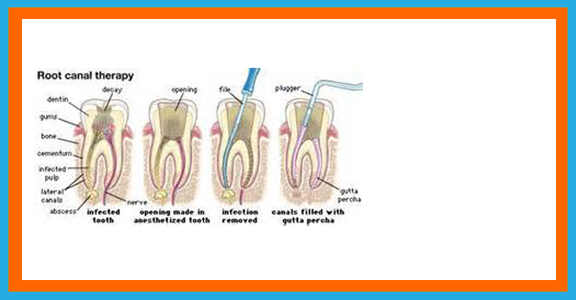Root Canal Therapy
Root canal therapy is necessary when the pulp (soft tissue inside your teeth containing blood vessels, nerves and connective tissue) becomes inflamed or diseased. During root canal treatment, your dentist or endodontist (a dentist who specializes in treating the insides of teeth) removes the diseased pulp. The pulp chamber and root canal(s) of the tooth are then cleaned and sealed. If the infected pulp is not removed, pain and swelling can result, and your tooth may have to be removed.
All teeth have between one and four root canals, or tiny passageways which branch off from beneath the top of the tooth to the tip of the root.
Many tooth problems involve infections that spread to the pulp, the part of the tooth containing blood vessels, nerves and other tissues. When the infection becomes worse, it can begin to affect the roots. A traumatic injury to a tooth can also compromise the pulp, leading to similar problems.
Root canal therapy is an effective treatment with a very high success rate, and involves removing the diseased tissue, halting the spread of infection and restoring the healthy portion of the tooth. In fact, root canal therapy is designed to save a problem tooth; historically the only alternative for treating a diseased tooth was extraction.
Procedure
Root canal therapy usually takes place over one to three visits. During the first visit, a small hole is drilled through the top of the tooth and into the inner chamber. During subsequent visits, diseased tissue is removed, the inner chamber is cleansed and disinfected, and the tiny canals are reshaped. The cleansed chamber and canals are filled with an elastic material and medication designed to prevent infection. If necessary, the drilled hole is temporarily filled until a permanent seal is made with a crown.
